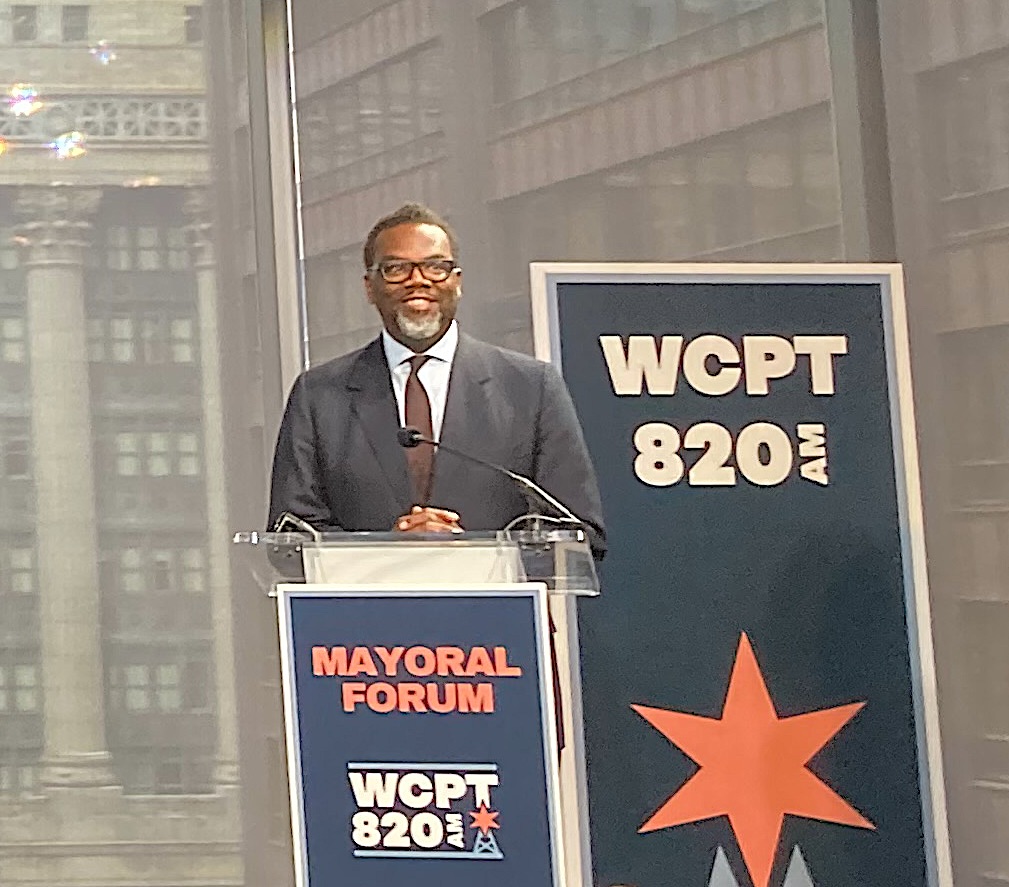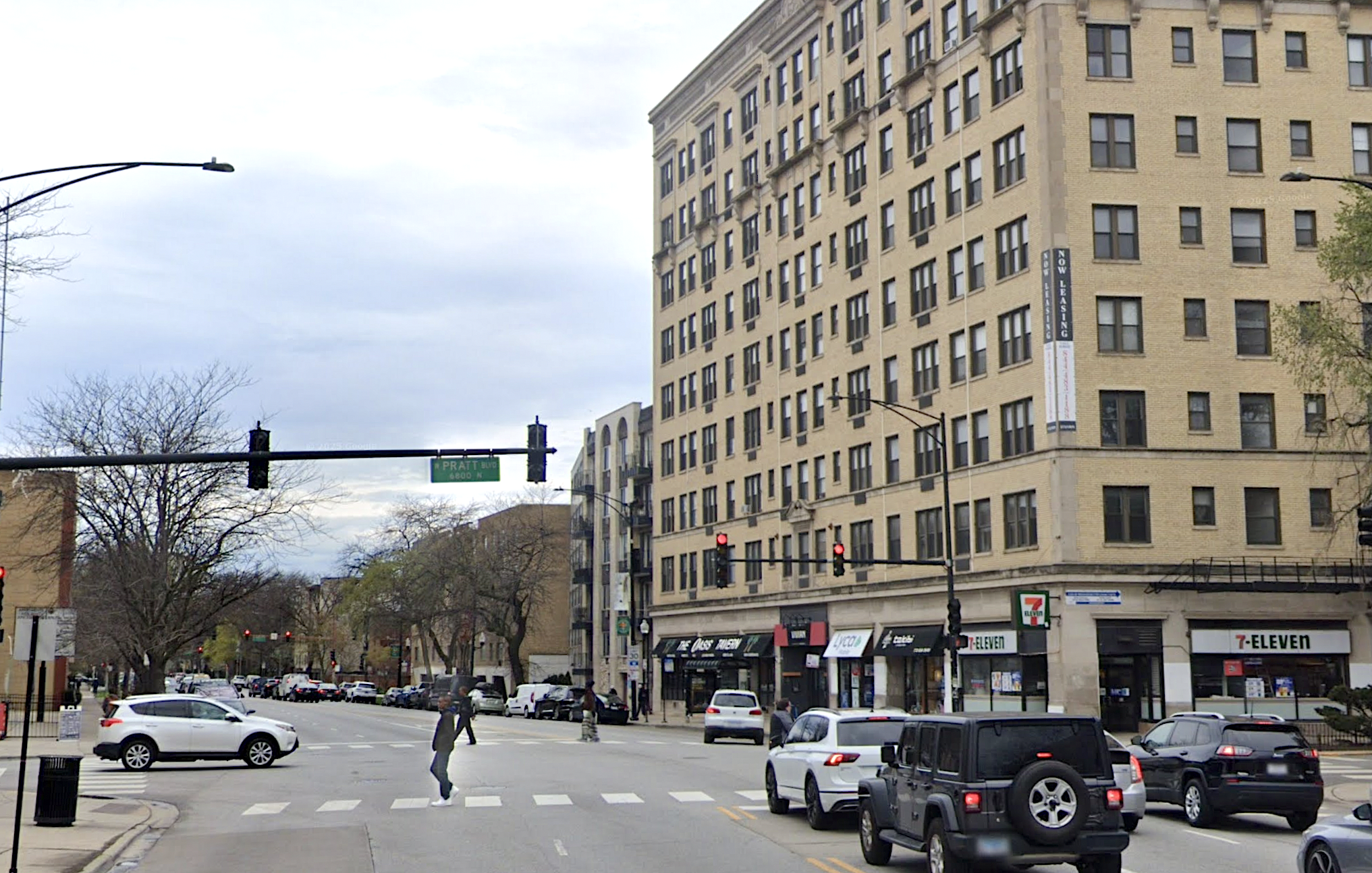To help Chicago voters make an educated decision during the upcoming mayoral election, Streetsblog Chicago is running a series of articles on candidates’ transportation platforms. As a 501(c)3 nonprofit, we do not endorse candidates. Mayoral campaigns can contact SBC co-editor John Greenfield at jgreenfield[at]streetsblog[dot]org to share their candidates’ positions on walking, biking, transit, traffic safety, and public space matters. Read previous articles about Lori Lightfoot's, Willie Wilson's, and Ja'Mal Green's platforms, as well as a humorous overview of the hopefuls transit platforms as literal transit platforms.
Cook County commissioner and mayoral hopeful Brandon Johnson is the favored candidate of the Chicago Teachers Union, SEIU and numerous neighborhood and progressive organizations including The People’s Lobby, Grassroots Illinois Action, and United Working Families. Johnson recently tucked another progressive feather in his campaign hat, landing an endorsement from the Better Streets Chicago Action Fund, sister organization of the sustainable transit advocacy group Better Streets Chicago. On its website BSCAF states, "We believe in a transportation future that will enable and uplift a more equitable Chicago. There’s only one candidate for mayor who promises that future for Chicago, and that’s Brandon Johnson.” Let’s take a closer look at how Johnson says he would, as mayor, improve Chicago’s streets and public transportation.
At mayoral forums, Johnson has touted his role in the Cook County Fair Transit South Cook pilot program, which reduced fares on South Side Metra lines and increased connecting Pace bus service, and stated that as mayor he would have the CTA participate in the program. He said he would improve pedestrian and biking infrastructure to mitigate the traffic violence epidemic, and called for a citywide plan to make neighborhoods more walkable. Johnson has pointed to his own experiences as a frequent bicyclist who lives in Austin, a disinvested neighborhood, and described his concern for his teenage son’s safety when he travels to school and activities by bicycle.
The “on the issues” page of Johnson’s website broadly paints strategies for improving transportation, with a few specifics. These include:
- Implementing bus rapid transit measures including transit signal priority and network of dedicated bus lanes
- Increasing CTA train service including late evening hours
- Deploying mental health professionals and housing advocates to connect people sheltering on CTA with resources
- Increasing dedicated bike lanes
- Reducing speed limits and creating car-free zones to improve walkability
- Plowing snow and ice from city sidewalks
- Creating a rapid-response CDOT team
We must return CTA to full strength, and transform Chicago into a city that is safe and reliable for cyclists and pedestrians.
— Brandon Johnson (@Brandon4Chicago) February 10, 2023
Affordability ✅
Plow the sidewalks ✅
Bike grid now ✅
House the unhoused ✅
Ghost buses and trains ❌
My full plan is here.https://t.co/iRqq0I19Yq
Streetsblog asked Johnson to elaborate on his transportation platform via email. The following responses have been lightly edited for clarity.
As mayor, what would you do differently regarding transportation?
It’s way past time that we start fully investing in biking infrastructure and view it as a public accommodation just as we do parks, transit, and public schools. I ride almost daily, so I understand the danger of cycling in Chicago, especially on the West Side, where protected bike lanes are few.
We need these lanes installed equitably across the city, but we also need overall traffic calming features like curb extensions, bump outs, and raised crosswalks and intersections to make pedestrians safer as well. None of these accommodations exist in a vacuum, but instead, are part of how our city needs to reimagine street safety.
On your campaign website, you mention the problem of funding shortfalls at transit agencies. How would you address these shortfalls?
Transit is a public accommodation, much like our parks, schools, and housing. And what has happened in city government for a very long time is inefficiency. Chicago has the resources; they’re just poorly managed. I will launch a full-scale efficiency review to discover instances of inefficient spending and return resources back to transportation and other agencies to better serve the public.
You also mention implementing reduced and eliminated fares for some transit riders. Can you expand on this?
We need to create incentives for our heavy transit riders, such as those traveling downtown from the far South Side and other working-class communities. These workers – often women and heads of household – need safe, improved, and reliable access to public transportation. But they also need fewer financial burdens. The same applies to Chicago Public Schools students. Reducing fares for working families who rely heavily on public transportation, and eliminating fares for students, will increase ridership and mass transit solvency, and allow more spending to be done in our communities.
Regarding bike infrastructure, you state the need for well-designed bike lanes. What does this look like?
All bike lanes in the city need a physical barrier to protect them from [motorists]. Painted lanes in the street are too dangerous and are ignored by drivers.
Read Johnson’s stance on transportation and other issues here.






